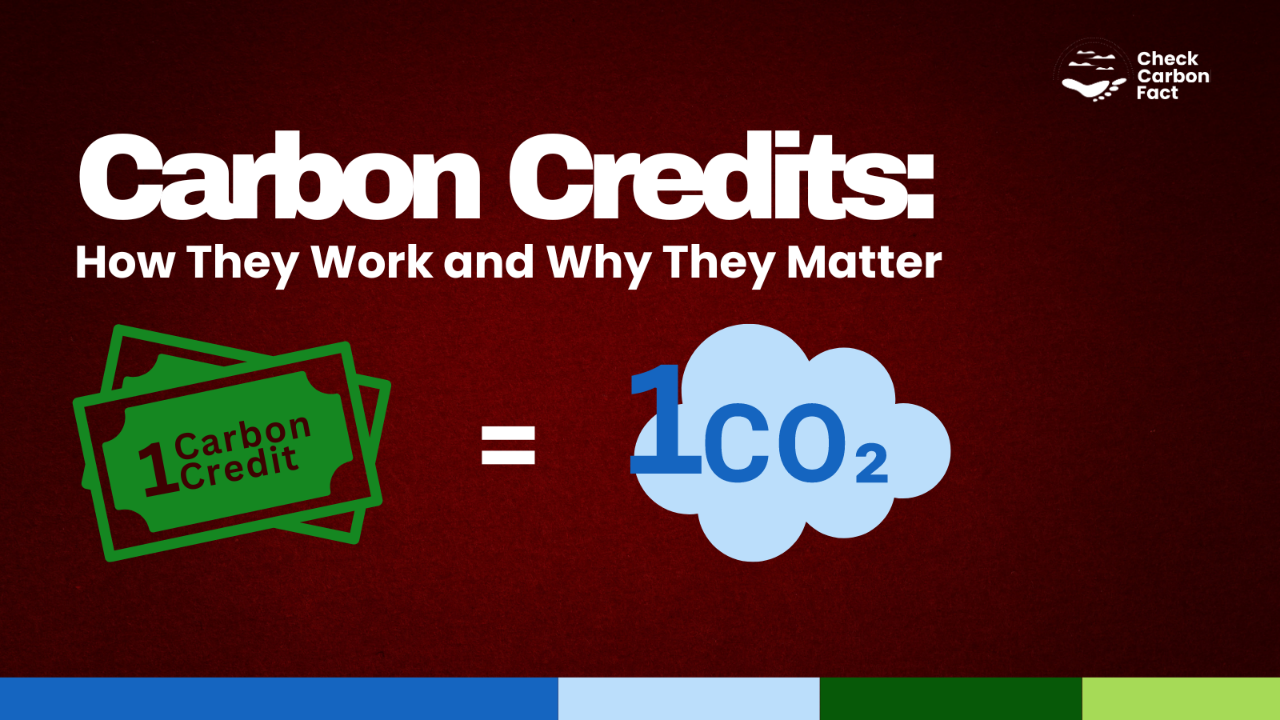The inception of international carbon trading markets traces back to the 1997 Kyoto Protocols. While these protocols laid the groundwork, recent years have witnessed a surge in regional markets, driving increased investments globally. As a unit of measurement integral to the functioning of “Cap & Trade” regulations, carbon credits play a significant role in regulating emissions for organizations.
These carbon markets facilitate the simultaneous trading of carbon credits and carbon offsets. Carbon offsets and credits have become integral players in the environmental landscape, promising a reduction in greenhouse gas emissions, while offering new market opportunities. In this article, we’ll delve into the fundamentals of carbon markets.
Carbon Credits: Vertical Permission Slips for Emissions
At its core, carbon credits, sometimes referred to as carbon allowances, function as permission slips for emissions. When a company acquires a carbon credit, typically from the government, they secure the right to generate one ton of CO2 emissions. This process creates a vertical flow of carbon revenue, moving from companies to regulators.
These credits flow vertically from companies to regulators, creating a market-based solution to the carbon emissions challenge. Each carbon credit represents one tonne of CO2e (carbon dioxide equivalent) that a company is permitted to emit. These credits are created and allocated by the regulatory body.
Interestingly, companies holding surplus credits have the option to engage in a horizontal transaction by selling these excess credits to other businesses, creating a horizontal flow. In contrast to the vertical flow of carbon credits, carbon offset projects introduce a horizontal dimension to the carbon market. These offsets become commodities that other companies can purchase, thereby diminishing their carbon footprint.
How Do Carbon Credits Work?
- Emission Reduction Projects: Carbon credits are generated through projects that reduce or remove greenhouse gas emissions. These projects can range from renewable energy initiatives, reforestation efforts, to energy efficiency improvements in industries.
- Emissions Limits and Caps: The number of credits issued to a company reflects its emissions limit or “cap.” If a company can keep its emissions below the cap, it accumulates a surplus of carbon credits. These surplus credits can be retained for future use or sold on the compliance carbon market, regulated by the overseeing body.
- Non-Compliance and Carbon Markets: Companies exceeding their emission limits turn to the carbon market to purchase credits from entities that have successfully limited their emissions. This dynamic creates a financial incentive for companies to innovate and implement sustainable practices, reinforcing the market-driven nature of carbon credits.
- Verification and Certification: Independent third-party organizations verify and certify the emission reductions achieved by these projects. This ensures transparency and credibility in the carbon credit market.
- Issuance and Trading: Once certified, carbon credits are issued and can be bought and sold on the carbon market. Companies exceeding their emission limits can purchase these credits to offset their excess emissions, creating a financial incentive for sustainable practices.
Why Carbon Credits Matter
Carbon credits directly contribute to mitigating climate change by placing a tangible value on emissions reductions. Through adherence to emission limits and the trading of carbon credits, companies actively participate in the global endeavor to reduce greenhouse gas emissions. Similarly, the market-driven nature of carbon credits encourages economic growth and job creation in green industries. Additionally, by fostering international cooperation and inclusive participation, carbon credits facilitate a collective response to the challenges posed by climate change.
- Climate Change Mitigation: Carbon credits directly contribute to the reduction of greenhouse gas emissions, playing a pivotal role in mitigating climate change. By supporting emission reduction projects, businesses and individuals actively participate in the global effort to limit global temperature rise.
- Promoting Sustainable Practices: The carbon credit system encourages the adoption of sustainable practices across industries. From investing in clean energy to implementing energy-efficient technologies, businesses are motivated to innovate and reduce their carbon footprint.
- Market-Driven Solutions: Carbon credits create a market for emissions reductions, fostering competition and innovation. Companies that proactively reduce their emissions not only contribute to a healthier planet but also position themselves as environmentally responsible, gaining a competitive edge.
- Job Creation and Economic Growth: The growth of the carbon credit market stimulates the development of green industries, leading to job creation and economic growth. As renewable energy and sustainability become more integral to business strategies, new opportunities emerge in these sectors.
- International Cooperation: Carbon credits facilitate international cooperation in the fight against climate change. By providing a standardized and universally accepted method for measuring emissions reductions, they encourage countries to work together towards common environmental goals.
- Inclusive Participation: The carbon credit system enables a wide range of stakeholders, from small businesses to large corporations, to participate in emission reduction efforts. This inclusivity is crucial for achieving meaningful and widespread change.
Do carbon offsets actually reduce emissions?
The efficacy of voluntary carbon offsets hinges on establishing a clear connection between undertaken activities and positive environmental outcomes. In certain cases, such as carbon capture technologies, the link is evident, with measurable reductions in CO2 emissions.
However, challenges arise in programs promoting green tourism or offsetting international travel, where the measurement of impact can be intricate. The credibility of the organization issuing the credit becomes paramount. Reputable carbon offset entities meticulously select projects and adhere to stringent reporting standards. Third-party auditors, aligning with established benchmarks like the UN’s Clean Development Mechanism, ensure the accountability of these projects.
Lead Change, Embrace Carbon Solutions
In conclusion, understanding the dynamics of carbon credits is essential for navigating the complex landscape of emissions regulation. As we witness the global impact of climate change, the call to action is clear. Embrace sustainable practices, invest in emission reduction projects, and actively participate in the carbon credit market. By doing so, individuals and businesses not only contribute to a healthier planet but also position themselves as leaders in the transition to a low-carbon future. Let’s unite in the collective effort to combat climate change and build a sustainable world for future generations.
Found it interesting and would like more in the mail?




